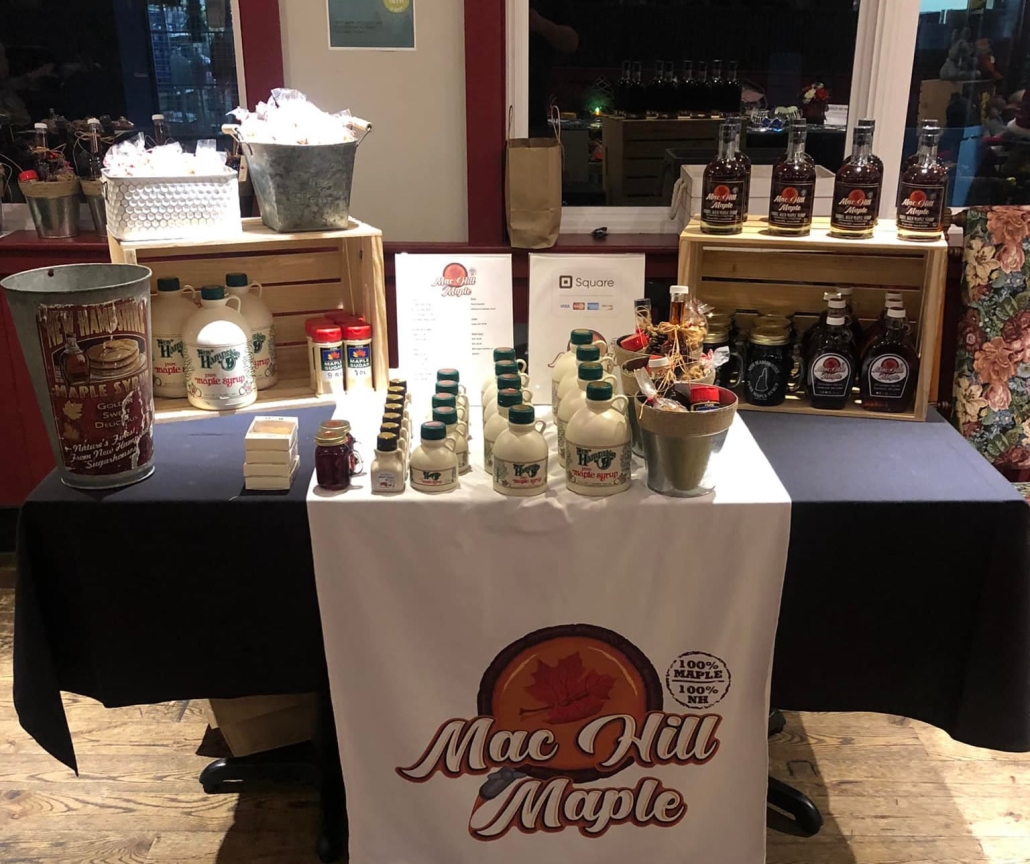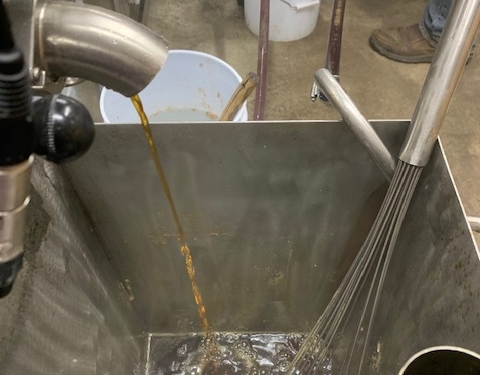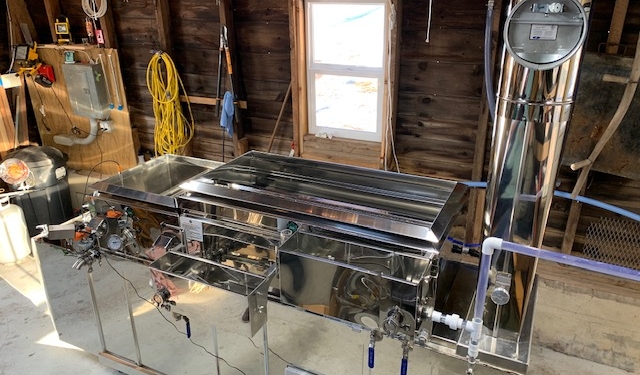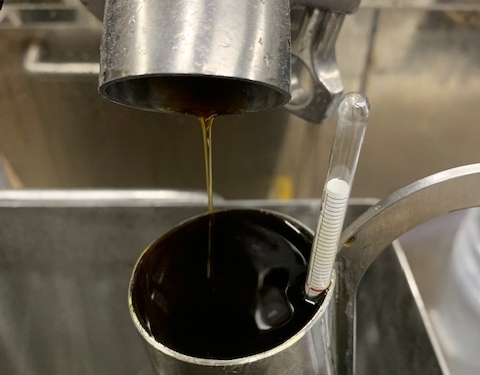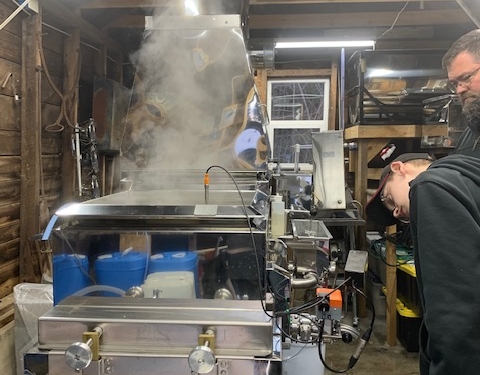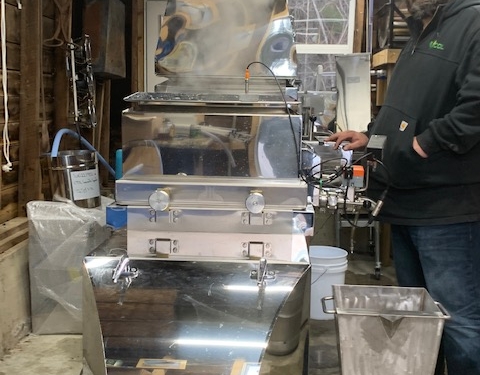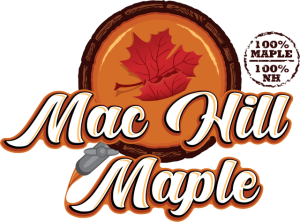Making of Maple Syrup
The science and art of Maple Surgaring
In late winter and early spring, we begin by tapping our maple trees. We carefully choose just the right spot to tap so that it causes zero damage to the tree. A 5/16″ diameter hole, that is 1 1/2″ deep is drilled into each tree.
Then we set the spile, which is how the sap to leaves the tree, by lightly hitting it with a small tapping hammer.
When the temperature climbs above freezing, the sap begins to rise in the tree and flows into our network of lines, as well as some that drip the sap into buckets, the traditional collection method.
Maple sap, is only 2% sugar, really just looks just like water! It takes 40 gallons of sap to produce a single gallon of syrup. The sap is collected in a large stainless-steel tank and the maple syrup magic begins.
We gather the sap and bring it to our sugar house to be processed and evaporated into maple syrup.
Once it reaches our sugar house, it is emptied out through a pipe and filtered.
Once it is ready for the evaporator the sap is boiled and the water in the sap is evaporated until the sap has reached the proper density which is the consistency of 66.9 percent sugar.
Finally, our delicious, sweet 100% pure New Hampshire maple syrup is poured into custom jugs for our customers.
Other syrup is set aside for special casking, maple candy, maple sugar, and many other maple syrup goodies.
